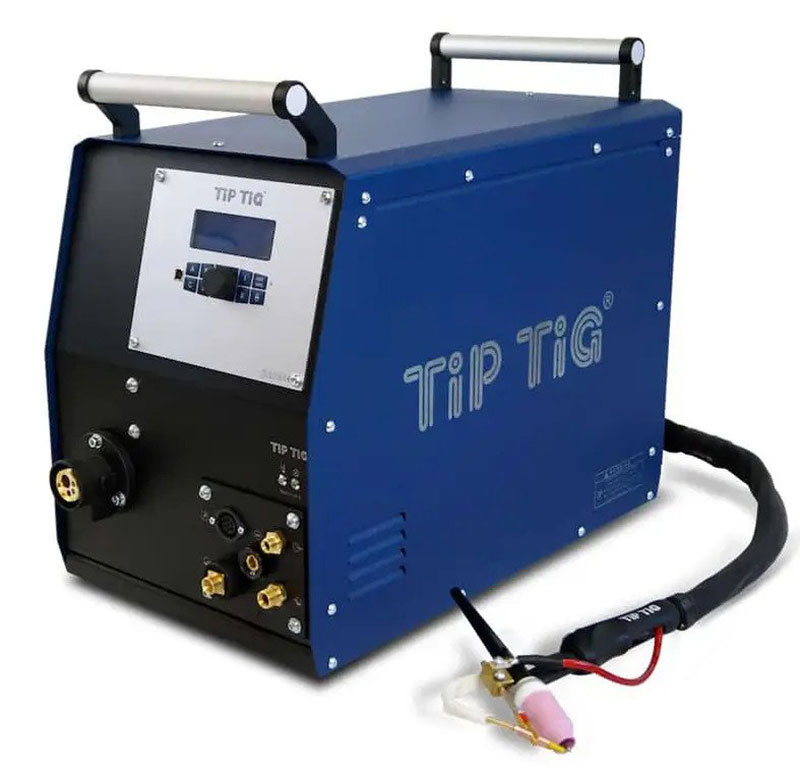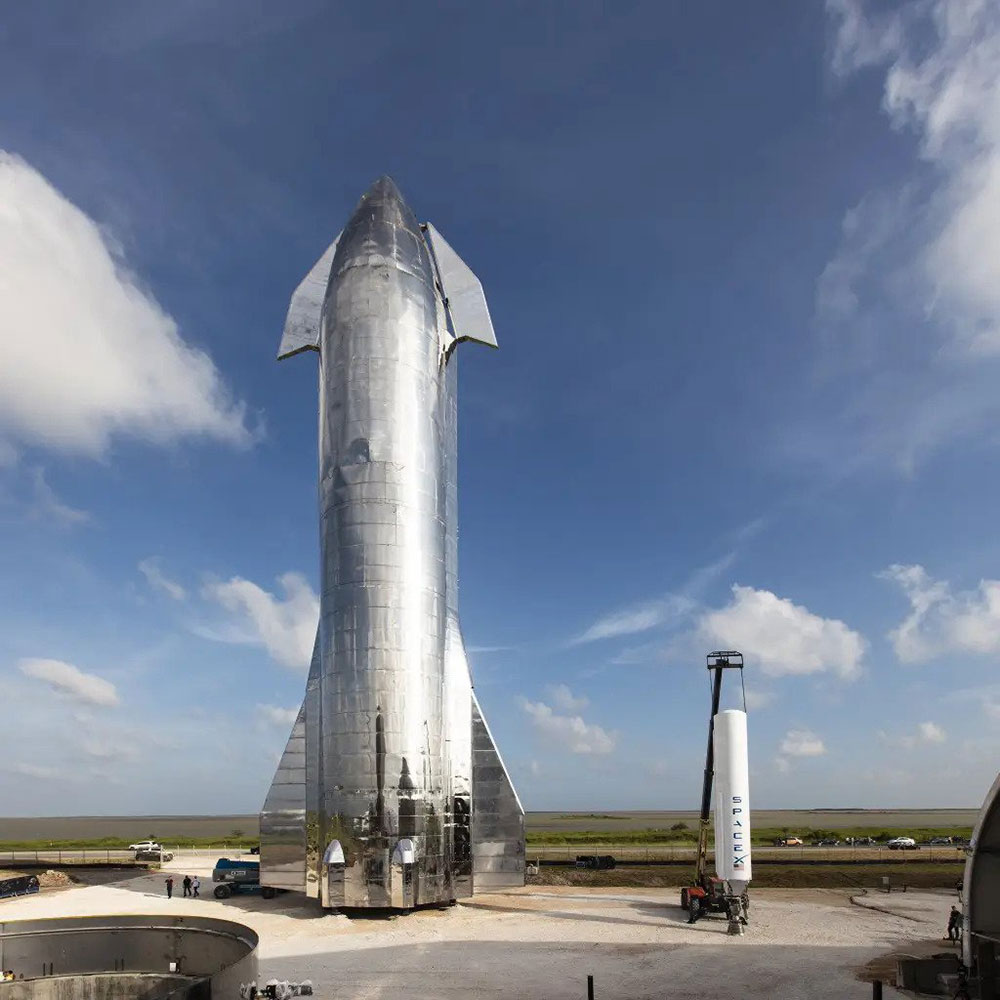TIP TIG – Future Of TIG Welding

Providing unmatched efficiency, weld quality, and ease of use, the TIP TIG is one of the best welding processes across all industries and applications.
While this sounds like an outlandish claim, in this article, we will examine what TIP TIG is and how come it offers such good performance compared to MIG and standard AC/DC TIG.
This welding process is used to achieve welds of the highest quality regardless of the metal alloy in critical industries, but a regular welding shop can also use it. That is why our editorial team at WeldingPros.net has decided to introduce you to the TIP TIG process and spread the word about it even further.
What Is TIP TIG And Its Technology?
The TIP TIG welding process derives its name from the acronym of the German word “Technologie Ingenieur Plasch,” which means “Technology of Engineer Plasch,” and the TIG as in, Tungsten Inert Gas.
TIP TIG was founded in 1997 by Siegfried Plasch in Austria and since its application has spread across the globe. All of the welding equipment is developed and manufactured in Austria, allowing the TIP TIG brand to have the “In-house” approach to research and development.
How TIP TIG Works
The TIP TIP is a unique hot wire TIG welding process and can be used in manual, automated, bore cladding, and orbital welding applications. It can weld all metals like traditional TIG and other manual welding processes.
Many people think of MIG and TIG as soon as they are first exposed to the TIP TIG process. That’s because the TIP TIG uses a wire feeding mechanism similar to that of MIG to feed the wire into the molten pool. This wire is electrically heated to the melting point with a low OCV (open circuit voltage) so that the wire melts right into the puddle and adds to the deposition rate.
The wire doesn’t chill the weld but instead adds to the wetting of the weld pool and promotes a good weld. The OCV is low enough not to cause a separate arc between the wire and the welded metal because it’s very close to the tungsten tip, which keeps the actual arc going. This is why the process uses a separate power source to energize the wire.
But unlike nearly all hot wire TIG welding processes, the TIP TIG can be operated manually and in all positions. Additionally, it’s simple to learn and apply, making it cost-effective to scale in industry and use as an individual.
The Details Of The TIP TIG Wire Action
The TIP TIG welding process delivers the highest possible welding energy while providing the lowest welding heat. This results in optimal fusion and minimal porosity while resolving most issues welding professionals face when welding alloy metal with standard TIG and MIG.
This welding process uses a unique approach to hot wire feeding in the TIG process. The TIP TIG welding machines provide continuously fed wire oscillated by the TIP TIG’s patent-pending four drive rolls – a mechanized drive plate.
The drives oscillate the filler wire back and forward at high speed, which provides many benefits in conjunction with the hot wire feeding.
The wire is vibrated by the drive plate’s mechanical action and transfers the vibration into the weld. The weld pool becomes agitated by the vibration, and its surface tension is disrupted.
This high-speed mechanical agitation of the wire benefits sluggish alloys like stainless steel, duplex, and others.
Improving weld fusion, releasing the weld stresses and pore defects from the welds, the TIP TIG’s unique approach significantly improves the quality of the welded joint.
Additionally, the TIP TIG drastically increases the deposition rate and weld speed. The improved weld speed reduces the heat input, which reduces the metal distortion while retaining the corrosion-resistant properties on metals prone to their deterioration.
The agitation of the weld pool and the hot wire system that preheats the filler wire combination create a unique TIG welding dynamic that slows down the weld solidification.
This results in a prolonged period of TIG weld fluidity and allows for more wire deposition and applied welding current.
The Difference Between TIP TIG And Standard TIG Overview
The manual TIG welding process is considered one of the best-joining methods for achieving high-quality welds, but it has many downsides we just had to accept because there weren’t any alternatives. If you wanted a perfect weld, especially on exotic metal, you would just have to TIG it.
The traditional TIG is a very slow process with some of the lowest weld speeds and metal deposition rates.
TIG also inputs too much heat, and welding metal requires careful planning of heat application. As a result, this process is the most challenging to learn, which is why only pros can stack dimes using TIG and achieve perfect welds.
The TIP TIG welding process outperforms the TIG welding process in every aspect. It’s significantly cheaper per lb of deposited filler metal which is a big concern for small and large welding production operations.
What Does This Difference Mean For Your Pocket?
The typical TIP TIG equipment for a smaller fab shop costs around $20000, which is costly compared to the traditional TIG setup. However, the turnaround time is quite fast, and the return on investment will quickly pay off the necessary TIP TIG welding machine(s).

The main reasons why TIP TIG is much cheaper to operate than TIG are:
- Much higher deposition rates
- Better joint quality and consistency in achieving weld inspection approval
- Significantly easier to learn, train, and operate
- Reduced amount of spent shielding gas and filler wire
So let’s take a look at two pipe welding example scenarios and estimate the cost-saving when welded with TIP TIG instead of traditional TIG. Afterward, I’ll explain the reasoning behind the estimation.
Let’s say your average hourly rate is around $100 for labor, filler wire is $6.55 per lb, and gas is about $0.12 per CFH.
A standard 6″ Schedule 40 pipe welded with TIP TIG will save you on average about $200, compared to TIG. This means that about 75 joints are required to pay for the TIP TIG system. Standard TIG requires about 2.7h labor time, 1.1h arc on time, and 1lb filler wire, netting about $282 of cost. While TIP TIG needs 0.7h work time with 0.3h of arc on time and 0.86lb of filler wire, costing about $79. That’s almost three times cheaper.
The 12″ Schedule 80 pipe will require only 10 joints to pay for the system, with about $1500 saved per welded pipe. Standard TIG needs about 21h of work at about 8.3h arc on time and 8lb of filler wire, costing roughly $2160. The TIP TIG requires just about 5.5h of work with 2.5h of arc on time with 6.56lb of filler wire, costing about $600. This is a huge difference-making a drastic change in your time and resource allocation.
TIP TIG welding is fundamentally more efficient. Thanks to the unique hot-wire feeding system with weld pool agitation, the process deposition rate is significantly faster than with traditional TIG, improving the weld completion time. This is where most of the cost-saving comes from, but many more factors are at play.
Unlike with standard TIG, the TIP TIG doesn’t require feeding the wire into the pool manually, using a foot pedal, stoping and restarting the arc, and getting the fresh rods. You can use TIP TIG from root to cap pass, which means less needed equipment and used processes. Many times when welding pipe, for example, you have to use one process for the root pass and another for the filler, hot, or cap pass. Being able to use just one machine, and one hand action for all passes makes welding much more simple.
That’s why welded pipe examples show such high cost savings. The process is much faster and simpler. Removing tens of variables from traditional TIG, the TIP TIG is easier to learn and perform.
TIP TIG Technology Adoption And Application
The TIP TIG welding process has seen substantial growth since its inception. This comes to no surprise, considering that it’s currently one of the best welding processes to use pretty much regardless of what you are working on. It’s used in industries ranging from aerospace, nuclear, oil and gas, to manufacturing, shipbuilding, and defense.
The TIP TIG is used by many big brands and small production lines alike. Some of the most prominent names like SpaceX have transitioned from traditional welding processes to TIP TIG because of its benefits.
The Prominent TIP TIG Application Projects
The TIP TIG arc weld process is used in many high-end projects, which proves its industry acceptance. In this article, we decided to share some of the more interesting industries and brands where TIP TIG was one of the reasons for success.
Aerospace – SpaceX Starship Mission
As one of the biggest privately held companies in the aerospace industry, SpaceX is one of the most well-known names in the world working on space exploration.
Their most ambitious projects yet are Starship and Super Heavy Rocket. Both are engineering wonders of the world, and the TIP TIG was used for welding their main parts.
The video shared by Elon Musk, shows the Boca welding team joining metal elements into the Starship’s dome. The dome and its elements were TIP TIG welded.
The primary reasons for TIP TIG application in SpaceX’s rocket fabrication were the higher precision, stronger joints, and a 20% reduction in mass, as stated by Musk.
Weld quality is of paramount importance in all aerospace applications. The low heat input of the TIP TIG hot wire welding process allows excellent distortion control.

In highly critical structural components where the slightest mistake requires rework, the TIP TIG provides a method that can sufficiently create joints without unnecessary distortion.
This is especially important considering that the Starship is primarily made from stainless steel, which experiences many problems when overheated.
The patented weld dynamics of TIP TIG are crucial in the aerospace industry. The weld puddle agitation provides porosity-clean welds that pass X-ray tests consistently regardless of the material thickness.
The surface tension disturbance created by introducing the vibration through the filler wire, helps with the elimination of the inherent sidewall wetting issues typical for sluggish alloys. As a result, the weld solidifies with the best possible results, is porosity-free, and passes the necessary checks.
CNOOC – LNG Storage Tank
China’s biggest liquid natural gas storage tank with a capacity of 160,000 cubic meters was welded with the TIP TIG technology. This is one of the biggest LNG storage tanks in the world, and it was made using a special 9% nickel steel alloy that allows ultra-low temperatures.
With a 99.18% of successful weld pass rate, the TIP TIG helped the CNOOC to achieve a breakthrough in the field of ultra-low temperature welding.

The TIP TIG welding process was used to weld 9% Ni steel inner tank wall plates efficiently to aid the CNOOC in achieving a cost reduction of a single tank by 1/3.
Conclusion
TIP TIG welding process is efficient, fast, and provides above standard results. Its unique methods of wire feeding allow it to provide consistent weld quality at the lowest possible weld times.
Many weld shops and individuals do not know this welding method, but they can definitely benefit from it. It’s not reserved for industrial use only. Significantly cutting costs and the needed skills to produce quality welds is something every welding shop needs. If you are a welding professional today, you should consider introducing TIP TIG in your welding arsenal.
View Full Article